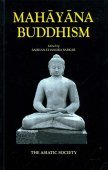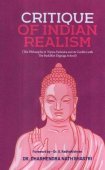Pratityasamutpada, Pratitya-samutpada, Pratītyasamutpāda: 9 definitions
Introduction:
Pratityasamutpada means something in Buddhism, Pali, Hinduism, Sanskrit. If you want to know the exact meaning, history, etymology or English translation of this term then check out the descriptions on this page. Add your comment or reference to a book if you want to contribute to this summary article.
In Buddhism
Mahayana (major branch of Buddhism)
Source: Wisdom Library: Maha Prajnaparamita SastraPratītyasamutpāda (प्रतीत्यसमुत्पाद) refers to the “twelve-membered dependent origination”, according to the 2nd century Mahāprajñāpāramitāśāstra chapter XLVIII. Accordingly, “as conditioned Dharmas (saṃskṛṭa), the skandhas, arising, enduring a very short time and ceasing, evolve ceaselessly in the cycle of existence (bhavacakra) according to the immutable mechanism of the twelve-membered dependent origination (dvādaśāṅga-pratītyasamutpāda)”.
Notes: Pratītyasamutpāda was discovered by the Buddhas but was not created by them nor by any agent (kāraka) whatsoever: “This pratītyasamutpāda has not been made by me nor by anyone else; but whether the Tathāgatas appear in this world or not, this nature of the Dharmas is stable”. (cf. Nidānasaṃyukta). Dependent origination is inherent in conditioned Dharmas. As Kośa III, p. 60, says: “The series of skandhas that develops in three lifetimes taken at random in the infinite series of lifetimes is the twelve-membered pratītyasamutpāda. Each of its members is a complex of the five skandhas, although it takes the name of the dharma that is the most important one (Kośa, III, p. 66). Each of its members, including ignorance (avidyā) which opens the list, prevails over its neighbor; all are equally impermanent (anitya), conditioned (saṃskṛta), result from dependency (pratītyasamutpanna), given to destruction, to disappearance, to detachment, to suppression.
Source: academia.edu: A Study and Translation of the GaganagañjaparipṛcchāPratītyasamutpāda (प्रतीत्यसमुत्पाद) refers to “(immense knowledge of) dependent origination”, according to the Gaganagañjaparipṛcchā: the eighth chapter of the Mahāsaṃnipāta (a collection of Mahāyāna Buddhist Sūtras).—Accordingly, “The great vehicle (mahāyāna) is made with four wheels (cakra), namely with the means of attraction, the spokes (ara) are well fitted as the roots of good have been transformed (pariṇāmita) with intention (āśaya), it is well made with a deep nave as there is the immense knowledge of dependent origination (pratītyasamutpāda), it is well kept together by the axle (akṣa)1494 in order to bear the burdens of all living beings, [...]”.

Mahayana (महायान, mahāyāna) is a major branch of Buddhism focusing on the path of a Bodhisattva (spiritual aspirants/ enlightened beings). Extant literature is vast and primarely composed in the Sanskrit language. There are many sūtras of which some of the earliest are the various Prajñāpāramitā sūtras.
General definition (in Buddhism)
Source: Wisdom Library: Dharma-samgrahaPratītyasamutpāda (प्रतीत्यसमुत्पाद) refers to the “twelve factors of conditional origination” as defined in the Dharma-saṃgraha (section 42):
- avidyā (ignorance),
- saṃskāra (volitions),
- vijñāna (consciousness),
- nāmarūpa (name and bodily-form),
- ṣaḍāyatana (the six sense spheres),
- sparśa (contact),
- vedanā (feeling),
- tṛṣṇā (craving),
- upādāna (attachment),
- bhava (continuity),
- jāti (birth),
- jarāmaraṇa (old age and death).
The Dharma-samgraha (Dharmasangraha) is an extensive glossary of Buddhist technical terms in Sanskrit (e.g., pratītya-samutpāda). The work is attributed to Nagarjuna who lived around the 2nd century A.D.
Source: WikiPedia: BuddhismThe doctrine of pratityasamutpada, often translated as "dependent arising," is an important part of Buddhist phenomenology and, some argue, metaphysics. Common to all schools of Buddhism, it states that phenomena arise together in a mutually interdependent web of cause and effect. It is variously rendered into English as "dependent origination", "conditioned genesis", "dependent co arising", "interdependent arising", or "contingency".
(Sanskrit; Pali: paticcasamuppada; Tibetan: rten.cing.brel.bar.byung.ba;)
Source: Shodhganga: A study of Nyāya-vaiśeṣika categories (buddhism)Pratītyasamutpāda (प्रतीत्यसमुत्पाद) or Pratītyasamutpādavāda refers to a division of Asatkāryavāda: one of the philosophical systems regarding the cause and effect relation prevalent in Ancient India.—The Buddhists also do not accept the pre-existence of the effect in the cause. Hence, they are also asatkāryavādins. The Buddhist theory is known as Pratītyasamutpāda-vāda. The term means that the emergence of something after the presence of something else. The Buddhists hold that causation means the succession of two events, of which the former is the cause and the latter is the effect. They hold that a thing can never change into another thing, because a thing is what it is (svalakṣaṇa).39 Causation, according to them, is dependent origination. There being some event, another event is sure to follow. It is generally believed that the cause continues to exist in the effect. But the Buddhists uphold that the effect is produced only after the cause is destroyed. According to them, the sprout (i.e., the effect) arises only after the destruction of the seed (i.e., the cause).40 Thus, the Buddhists are also asatkāryavādins.
Languages of India and abroad
Sanskrit dictionary
Source: Cologne Digital Sanskrit Dictionaries: Edgerton Buddhist Hybrid Sanskrit DictionaryPratītyasamutpāda (प्रतीत्यसमुत्पाद).—m. (= Pali paṭicca-samup-pāda; commonly taken as [compound] in both languages; see pratītya), origination by dependence of one thing on an- other; applied to the celebrated ‘chain of causation’, the (usually twelve) steps of which are the same as in Pali, from avidyā to (a compound ending in) upāyāsa: elaborate analysis Śālistambasūtra 76.13 ff. (valuable discussion by LaVallée Poussin), cited Śikṣāsamuccaya 219.10 ff.; more briefly Daśabhūmikasūtra 48.23 ff.; schematic lists of the terms, Mahāvyutpatti 2241-58; Dharmasaṃgraha 42; Saddharmapuṇḍarīka 179.4 ff.; Mahāvastu ii.285.8 ff.; 345.13 ff.; iii.448.12 ff.; Avadāna-śataka ii.105.16 ff.; Kāśyapa Parivarta 61, 62; Suvarṇabhāsottamasūtra 193.9 ff.; an approximate, not quite complete, analysis in reverse order (some of the above lists have this order or both together) in Lalitavistara 346.1 ff.; the name is found, without listing of the terms, Lalitavistara 181.19; Mahāvastu ii.416.20; 417.5; iii.314.4; Kāśyapa Parivarta 94.2; Divyāvadāna 300.18; 487.24; 547.19; 549.12, 15; Avadāna-śataka i.287.14; Gaṇḍavyūha 89.13, etc. The standard list may be cited from Mahāvyutpatti 2241 ff., where the twelfth item is split up into its elements, not put into a [compound] as often: 1 avidyā, 2 saṃskāra (here sg.), 3 vijñāna, 4 nāmarūpa, 5 ṣaḍāyatana (here sg.), 6 sparśa, 7 vedanā, 8 tṛṣṇā, 9 upādāna, 10 bhava, 11 jāti, 12 jarā- maraṇa, śoka, parideva, duḥkha, daurmanasya, upāyāsa.
Source: Cologne Digital Sanskrit Dictionaries: Monier-Williams Sanskrit-English DictionaryPratītyasamutpāda (प्रतीत्यसमुत्पाद):—[=pratītya-samutpāda] [from pratītya > pratī] m. ([Buddhist literature]) the chain of causation, [Lalita-vistara] (twelvefold; cf. [Dharmasaṃgraha 42]).
[Sanskrit to German]
Sanskrit, also spelled संस्कृतम् (saṃskṛtam), is an ancient language of India commonly seen as the grandmother of the Indo-European language family (even English!). Closely allied with Prakrit and Pali, Sanskrit is more exhaustive in both grammar and terms and has the most extensive collection of literature in the world, greatly surpassing its sister-languages Greek and Latin.
See also (Relevant definitions)
Partial matches: Pratitya, Samutpada.
Starts with: Pratityasamutpadanaya.
Full-text (+24): Idampratyayata, Samskara, Upadana, Niyatana, Vedana, Jaramarana, Shadayatana, Repeated birth, Vijnana, Namarupa, Jati, Trishna, Bhava, Shrivatsa, Avidya, Sparsha, Pratityotpada, Wholesome Conduct, Kushalakarma, Hetupratyaya.
Relevant text
Search found 27 books and stories containing Pratityasamutpada, Pratītya-samutpāda, Pratitya-samutpada, Pratītyasamutpāda; (plurals include: Pratityasamutpadas, samutpādas, samutpadas, Pratītyasamutpādas). You can also click to the full overview containing English textual excerpts. Below are direct links for the most relevant articles:
Maha Prajnaparamita Sastra (by Gelongma Karma Migme Chödrön)
Note (1): The Hīnayānist dharmatā < [Part 2 - Understanding dharmatā and its synonyms]
Bodhisattva quality 14: skilled in teaching dependent origination < [Chapter X - The Qualities of the Bodhisattvas]
III. Emptiness according to the Madhyamaka < [Note on emptiness (śūnyatā)]
Mahayana Buddhism and Early Advaita Vedanta (Study) (by Asokan N.)
Chapter 5.7 - Madhyamika Interpretation of Dependent Origination
Chapter 4.1 - Reality in Madhyamika (a): Void the Absolute
The Tattvasangraha [with commentary] (by Ganganatha Jha)
Verse 1965-1966 < [Chapter 23 - External World]
Stupas in Orissa (Study) (by Meenakshi Chauley)
During the Gupta period < [Chapter 2]
Socially Engaged Buddhism (with reference to Australian society) (by Phuong Thi Thu Ngo)
Engaging Outer Peace < [Chapter 2]
Wheel Symbolism in Buddhism < [July – September, 1994]
Reviews < [July – September 1976]
Reviews < [October - December 1976]
Related products

